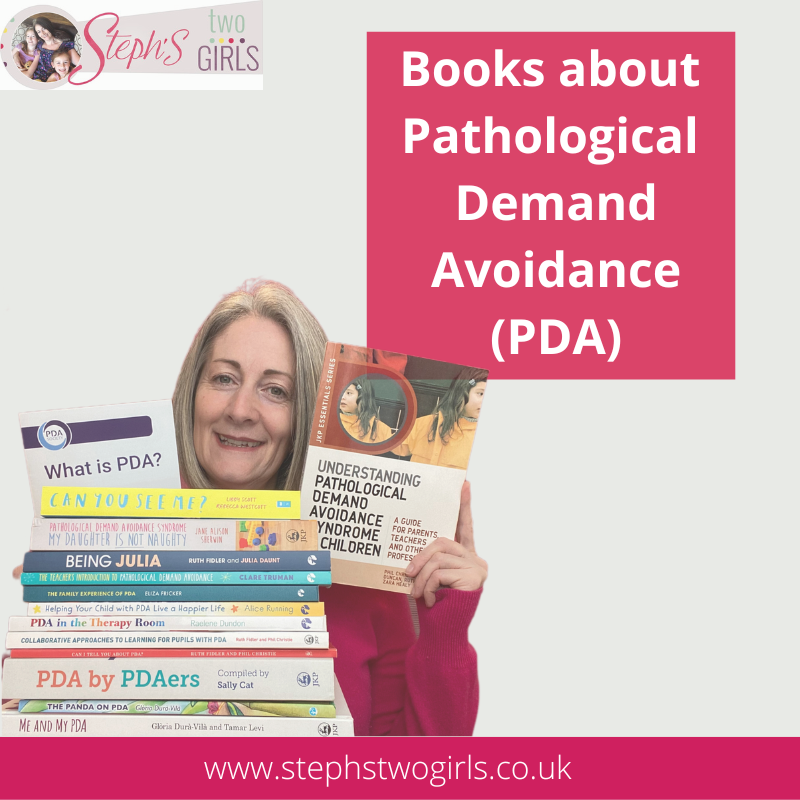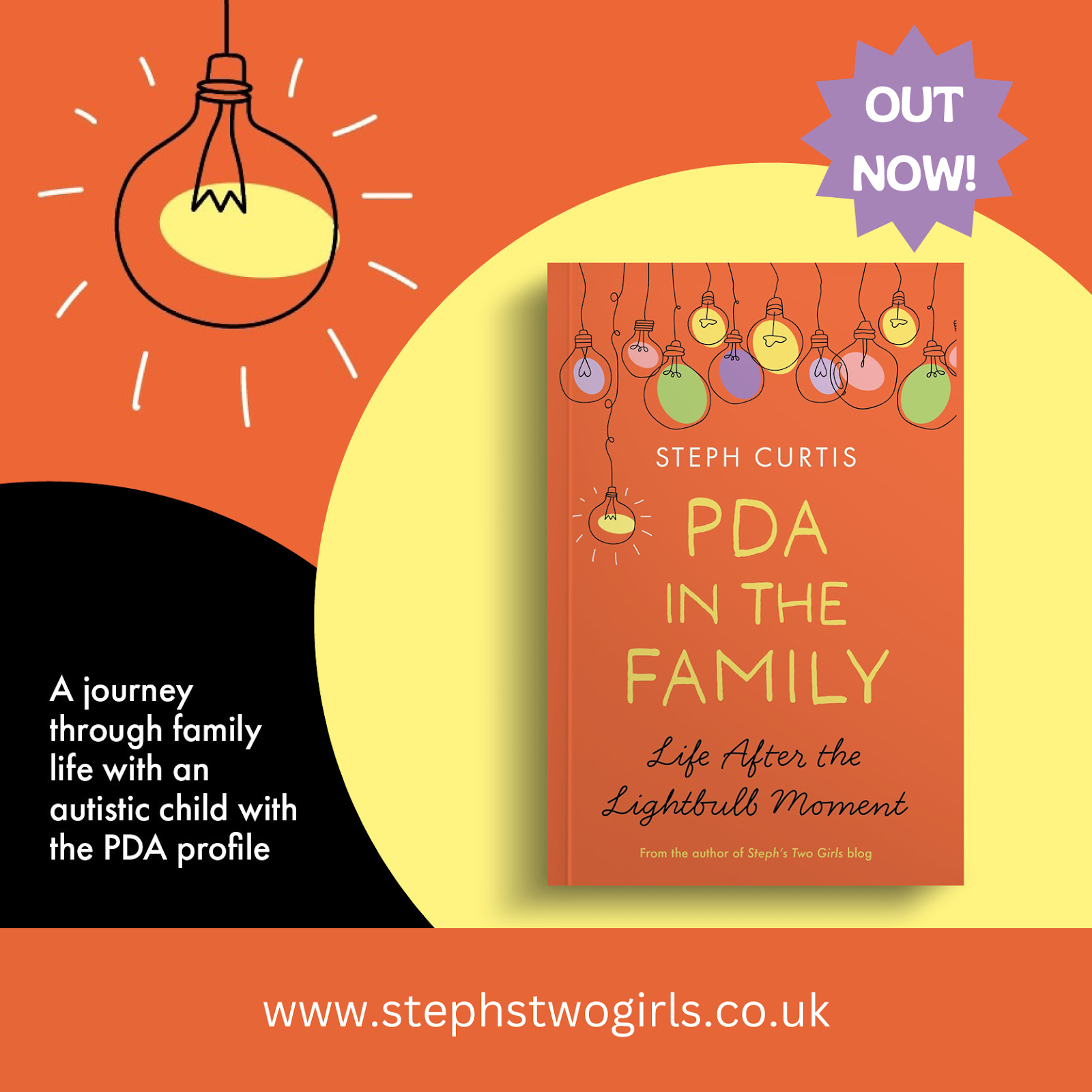Whilst pulling that last post together, I went back over some older blog posts of mine. It was so interesting to read my thoughts from those times, as a lot of them capture Sasha's personality and characteristics from when she was younger. I wrote the following post in the early days, after the autism diagnosis but before we had heard of Pathological Demand Avoidance, and it highlights how we first began down the short path to stumbling across that diagnosis:
February, 2010.
'I am wondering, given the past week of good behaviour, if people think I make things up about Sasha - in fact I sometimes wonder if I'm imagining things myself! Makes me feel a bit alone to be honest - no-one else really sees her for as much time and as constantly as I do, and her behaviour is obviously different towards different people, especially if she thinks I'm not around. What am I doing wrong, or is it just that all children know how to play their mums?! However the books I've read on the subject do suggest that improvements come in spurts rather than consistently, and this is probably how it is for now.
Sasha has quite a few good phrases now, even if the language isn't all that clear - including 'there he/she/it is' and '1-2-3-wake-up' if we're pretending to sleep. 'Home sweet home' is my favourite phrase of hers though, I love to hear that. I did laugh a lot when I went to collect her from nursery on Friday and they said she had resolutely refused any tea, pushing it away (something she has eaten happily several times before!) but instead had sat there singing 'twinkle,twinkle,chocolate bar' (instead of little star, obviously). She does that at home also, generally at the top of her voice, and that's another thing that always makes me smile. When home last weekend she happily sang 'happy birthday' to her nana, and even quietly went and got the bag of presents to give to her of her own accord! The fact she wanted to open them may have had something to do with it though....
I need to go and do some more reading now, in preparation for our next meeting with the paediatrician (lunchtime on Thurs). I have in my mind something about PDD and how that might be Sasha - here I'm copying directly from the NAS website...
"A dad once observed that his son didn't have autism but PDD-NOS: Pervasive Developmental Disorder Not Otherwise Specified. "I just wish he had something I could pronounce," he added wryly, "something someone has heard of." Such exasperation is understandable given the somewhat cumbersome and commonly misunderstood acronym, PDD-NOS, which describes a specific pervasive developmental disorder. A child may be diagnosed with PDD-NOS if he or she shows some behavioural features of autistic disorder but does not meet the full criteria. All of the listed PDD are part of a spectrum of overlapping conditions. To illustrate this, a child may begin with a diagnosis of PDD-NOS, develop more autistic features with age, and be re-diagnosed with autism or another pervasive development disorder; conversely, a child with autism may improve and be re-diagnosed with PDD-NOS.'
As Sasha does seem to recognise and show emotion, and can interact very well with people she doesn't know all that well (when it suits her), I'm wondering if this is how she may be diagnosed. My worry at this stage is still that Sasha is not 'bad' enough to get help which she may well need desperately when starting school, and I'll do everything I can to make sure that start will be as smooth for her as it was for Tamsin.'
The photo above is from around the same time as this post was written; I remember that day clearly as both girls spent about an hour giggling, whilst playing in and popping up out of that big box! Lots of interaction and lots of being social on Sasha's part, and so, lots of internal debate about the autism diagnosis from me. Sasha just didn't seem to follow the 'typical' autism rules.
Other posts I wrote in the first year explain this type of behaviour without being able to put a finger on it; Tears and Tantrums for the EYAS was one and in More Ups and Downs I talk about Sasha's perfectionism and not wanting to take direction. Later in that year I wrote about how we were applying for a Statement of Educational needs (now known as an EHCP). After an initial setback, Sasha was 'awarded' a Statement; in other words we gained a lot more paperwork and the opportunity to meet with people involved with her at least once a year. The following year I wrote about the Statement process inching along. I haven't yet found a post describing exactly how it felt when I very first found out about PDA, but I do know it was a lightbulb moment. Two years after her diagnosis of autism, I first tried to explain Pathological Demand Avoidance to my readers.
Life was good back then; it had its ups and downs of course but we managed, and it wasn't all doom and gloom. It's still good now; it may not be plain sailing all the way but I've got used to the fact that there's never a dull moment around here and I love every second of it!
To find out more about our experiences, please check out our 'About Us' page. If you are looking or more information on Pathological Demand Avoidance, why not try some of these, my most popular posts?
What is PDA (Pathological Demand Avoidance)?
Ten things you need to know about Pathological Demand Avoidance
Does my child have Pathological Demand Avoidance?
The difference between PDA and ODD
Strategies for PDA (Pathological Demand Avoidance)
Pathological Demand Avoidance: Strategies for Schools
Challenging Behaviour and PDA
Is Pathological Demand Avoidance real?
To follow me on other social media channels, you can find me at the following links or click the icons below!
Facebook: www.facebook.com/stephstwogirls
Twitter: twitter.com/stephstwogirls
YouTube: www.youtube.com/c/stephcurtis
Instagram: www.instagram.com/stephstwogirls/





















No comments:
Post a Comment
Comments are always very much appreciated and can really help the conversation go further...